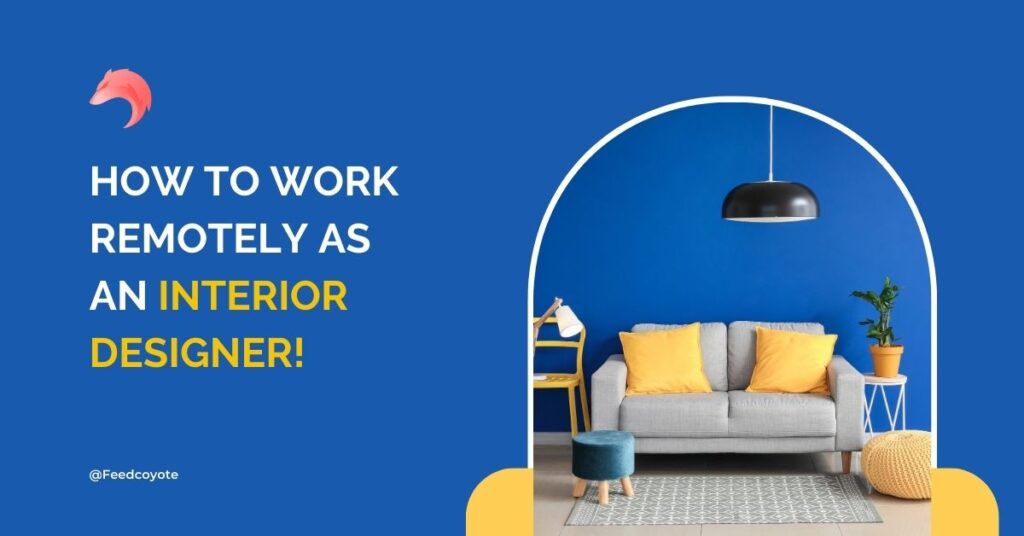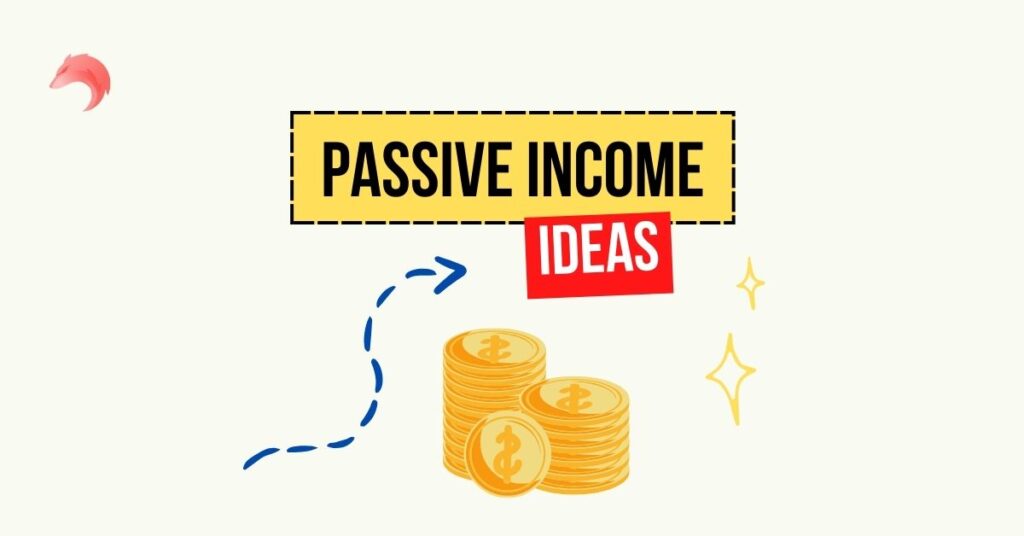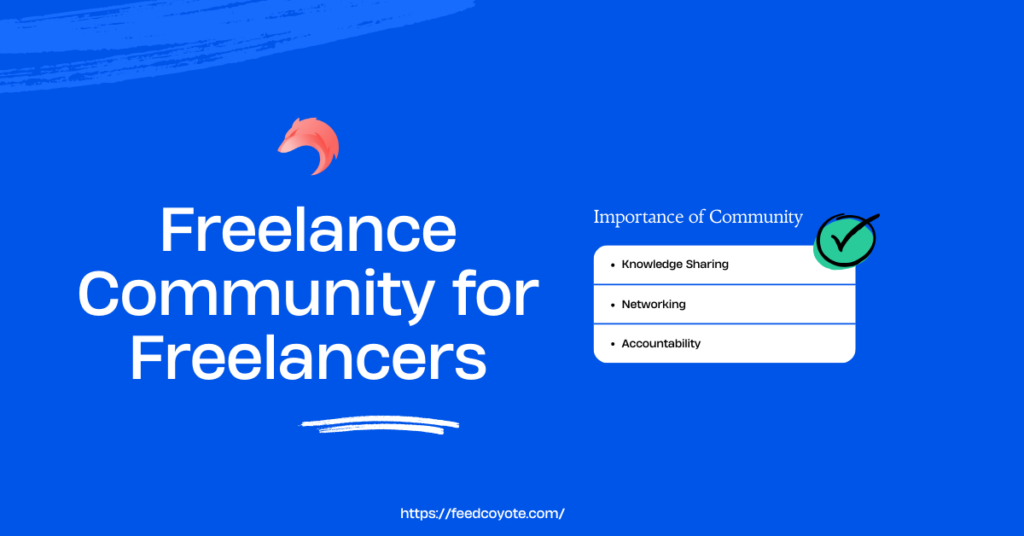Imagine transforming spaces from the comfort of your home, where creativity meets convenience.
The digital era has redefined the realm of interior design, now embracing the immense benefits of remote work.
This article will guide you through the essentials of flourishing as a remote interior designer, from honing vital skills to maintaining dynamic client relationships.
Listen to Summary –
Benefits of Working Remotely as an Interior Designer
Working remotely as an interior designer offers a range of benefits that enhance both personal and professional life. Embracing design projects from the comfort of your own space allows for a deeper dive into design trends, helping you stay ahead of what’s new and exciting. With no commute, you have more time to dedicate to design clients and space planning, ensuring that each project meets design standards with precision.
Remote work enables you to offer design services and solutions without geographical constraints, expanding your pool of potential clients. By utilizing digital tools, you can effectively communicate design direction and manage the design process from anywhere. This flexibility fosters a balanced lifestyle, permitting your design studio to be wherever you choose. Remote interior designers often enjoy:
- Increased creativity with the ability to set up personalized workspaces
- Flexibility in schedule, allowing for a better work-life balance
- Reduced overhead costs of maintaining a physical office
- Opportunity to partner with businesses globally
- More time to develop compelling designs and champion design excellence
- Enhanced ability to collaborate with an entire team of production design staff, regardless of location
With these benefits, a design professional can create beautiful designs and maintain a thriving design business without the constraints of a traditional office environment.
Necessary Skills for Remote Interior Design Work
To thrive as a remote interior designer, certain skills go beyond a keen eye for design and a deep understanding of design systems. Mastering these abilities ensures you not only design beautiful spaces but also run an efficient and successful design business. These skills encompass strong communication and collaborative techniques, exemplary self-discipline with exceptional time management, and proficiency in a variety of remote design tools.
Strong Communication and Collaboration Skills
Effective communication is pivotal when discussing design ideas with clients or conveying detailed shop drawings to a business partner. Remote interior designers must be adept at articulating their design vision and understanding client needs through various digital channels. Moreover, collaborating with production design staff, other design professionals, and possibly an entire team requires seamless coordination, which hinges on clear and concise communication.
- Listening: Understand client needs and feedback to ensure successful project outcomes.
- Verbal Skills: Explain design concepts and processes so that clients and team members are informed and confident in the project.
- Written Skills: Keep written records such as email updates, design documentation, and project timelines that are clear and professional.
- Visual Skills: Utilize visual tools and software to share design direction and space plans effectively.
Self-Discipline and Time Management
Without the structure of a traditional office, remote interior designers need to maintain a high level of self-discipline. Time management becomes an essential skill, aiding in balancing multiple projects, meeting deadlines, and staying abreast of design trends while managing day-to-day operations such as financial statements and design documentation. Setting a routine, prioritizing tasks, and minimizing distractions are key strategies for maximizing productivity.
- Prioritizing: Evaluate tasks to focus on high-impact activities first.
- Scheduling: Plan each day effectively and set realistic deadlines to keep projects on track.
- Deadlines: Meet client and project deliverables on time without sacrificing design quality.
- Focus: Remain engaged with the task at hand, resisting the distractions of a home environment.
Proficiency in Remote Design Tools
An interior designer’s toolbox must include design software that enables them to present compelling designs, whether that’s through detailed floor plans, space plans, or immersive 3D visualizations. Familiarity with cloud-based collaboration tools also forms vital links with clients and team members. Continual learning is necessary to keep up with the evolving landscape of design technology.
- Design Software: Mastery of industry-standard programs like CAD for floor plans and 3D rendering tools.
- Project Management Tools: Utilize digital platforms for scheduling, task management, and collaboration.
- Communication Platforms: Video conferencing and instant messaging apps to maintain clear, continuous communication.
- File Sharing Services: Efficiently share large design files and maintain organization of project materials.
By attaining these key skills, remote interior designers can ensure seamless operation of their design service, foster meaningful relationships with clients, and produce beautiful, functional spaces that reflect design excellence and current trends.
Setting Up Your Remote Workspace
To excel as a remote interior designer, establishing a dedicated workspace is essential. This space should not only align with your design aesthetic but also promote productivity and efficiency. It’s where you’ll spend hours brainstorming design solutions, creating space plans, and communicating with your design clients. Here are some tips to optimize your workspace:
- Ergonomics: Invest in comfortable and ergonomic furniture. A good chair and desk setup can minimize body strain during long periods of work.
- Equipment: Ensure that you have a reliable computer that can handle design software. High-quality monitors are also important for accurately reviewing color and detail in your projects.
- Lighting: Proper lighting reduces eye strain. Consider a mix of natural light and quality desk lamps to illuminate your workspace effectively.
- Organization: Keep your workspace clutter-free. Organizers, shelves, and drawers can help you manage samples, shop drawings, and design documentation.
- Privacy: If possible, choose a quiet space where you can work undisturbed, important when you’re on calls or deeply engaged in the design process.
Choosing the Right Tools and Software
An interior designer’s toolkit should cater to the specific needs of design project management and execution. Here’s a brief table listing the essential types of tools and their purposes:
| Tool Category | Purpose | Examples |
| Design Software | Drafting and visualizing designs | CAD, SketchUp, Revit |
| Project Management | Task coordination and scheduling | Asana, Trello, Monday.com |
| Communication | Client and team interaction | Zoom, Slack, Microsoft Teams |
| File Sharing | Efficient document exchange | Dropbox, Google Drive, WeTransfer |
Select software that suits your design style and workflow. Remember to stay updated on the latest design trends and technologies to enhance your service offerings.
Creating an Inspiring and Functional Home Office
Your home office is a reflection of your design business and holds the potential to inspire your work. Infuse the environment with elements that spark creativity, but remember functionality is just as important.
- Theme: Decorate your space in a way that motivates you, whether through colors, artwork, or Branding – Environmental Graphic Design.
- Flexibility: Have a space that can change according to different project needs, like space for large format drawings or mood boards.
- Motivation: Surround yourself with items that reflect your achievements, like past project pictures or design awards.
- Comfort: Ensure your office is a place you enjoy spending time in. Add plants or a music system for a pleasant ambience.
Establishing a Schedule and Routine
Having a solid routine is critical for a remote work setup. It helps you balance numerous design projects while maintaining a personal life. Here’s how you can develop an efficient schedule:
- Start Times: Decide on a start time each day to transition into work mode.
- Breaks: Schedule short breaks to avoid burnout — refresh your mind regularly.
- Tasks: Use the first part of your day for high-priority tasks as you’re likely to be most focused.
- Boundaries: Set a specific time when the workday ends to maintain work-life balance.
Maintaining a routine ensures that you meet the demands of your design business while also allowing time for rest and rejuvenation. Each element of your routine should champion design excellence, personal well-being, and client satisfaction.
Remote Work Workflow for Interior Design Projects
Remote Work Workflow for Interior Design Projects Adapting your workflow to a remote environment necessitates a revamp of traditional interior design processes to suit the digital landscape. Begin by outlining a clear design process that translates interior design standards into virtual actions. Set milestones for deliverables such as concept approvals, draft presentations, and final reviews. Communication should be streamlined across your entire team, from production design staff to business partners. Utilize project management tools to schedule phases, tasks, and follow-ups. Remain vigilant in documenting every step for transparency and maintain regular updates to financial statements to ensure project profitability. Embrace this digital transformation as an opportunity to create compelling designs irrespective of physical location.
Conducting Virtual Consultations and Initial Client Meetings
Virtual consultations and initial client meetings have become a cornerstone of remote interior design service. Leverage video conferencing tools to give a personal touch as if you’re conducting a face-to-face meeting. Prior to the meeting, prepare a checklist of design directions and client requirements. This helps in crafting a focused and productive session. Utilize screen sharing features to discuss design ideas and space plans, enabling clients to visualize your concepts. Record these sessions (with client consent) for future reference, ensuring all design clients’ preferences and concerns are addressed in your design solutions. A seamless virtual consultation process exemplifies professionalism and sets the stage for successful remote collaboration on design projects.
Utilizing Digital Design Tools for Space Planning and Floor Plans
The heart of interior design lies in space planning and the creation of accurate floor plans. For the remote designer, digital design tools are indispensable. These tools not only serve traditional needs but also offer advanced features like 3D modeling and virtual walkthroughs. Showcasing your design solutions digitally can heighten client engagement and approval rates. For example, use CAD software to develop detailed space plans and generate shop drawings, ensuring they’re in line with design standards. Collaborating on these elements in real-time through digital platforms can hasten feedback loops and enhance the quality of your design service. A mastery of digital design tools will cement your reputation as an adept design professional.
Collaborating with Clients and Stakeholders through Online Tools
Collaboration is key in interior design, particularly when working remotely. It is imperative to establish a robust online framework that enables you to connect with clients, stakeholders, and collaborators seamlessly. Adopt communication platforms that allow for instant messaging, video calls, and file sharing—critical for keeping all parties aligned with the design direction and project status. Distribute concise agendas before virtual meetings to maximize effectiveness. Implement shared digital workspaces like Google Drive or OneNote for collective access to essential design documentation and progress tracking. The savvy integration of these digital resources ensures that your interactions with clients and stakeholders are as efficient and fruitful as a traditional design studio—promoting meaningful partnerships and championing design excellence even from a distance.
Building and Maintaining Effective Client Relationships
Building and maintaining strong relationships with design clients is a cornerstone of a thriving remote interior design business. The key to this when you cannot meet face-to-face is to establish trust and rapport through consistent and transparent communication. Always take the time to understand your client’s needs and design aesthetics, ensuring they feel heard and valued. It’s crucial to be proactive and check in with your clients, not just about their current projects but also to keep abreast of emerging design trends and potential future collaborations. Partner with your clients, treating them as a vital part of the design process—after all, a satisfied client is the best business partner you can have. Set clear expectations from the onset, so both you and the client understand what is deliverable within the project scope and timeline. Lastly, don’t forget the personal touches; a virtual ‘coffee meeting’ can provide both warmth and a sense of connection in the digital realm.
Communicating Clearly and Effectively via Emails and Video Conferencing
In a remote setting, clear and effective communication is paramount. Crafting skillful emails that are concise and informative becomes your everyday tool for asynchronous dialogue. Keep emails structured with bullet points or numbered lists to outline tasks, updates, or queries clearly. For real-time interaction, video conferencing is the next best thing to an in-person meeting—utilize it to discuss complex design directions, present compelling designs, or solve immediate challenges. Invest in high-quality audio-visual equipment to ensure these sessions are as professional and clear as possible. Remember to always follow up meetings with a summary email, encapsulating what was discussed and agreed upon, ensuring there’s a written record for future reference.
Try Feedcoyote’s Project management hub for effective collaboration and networking
Providing Regular Project Updates and Seeking Feedback
One of the pillars of exemplary design service is the practice of providing regular project updates. Create a schedule for these updates to keep your clients in the loop throughout the design process. Use engaging visual materials like renderings or updated floor plans to illustrate progress. This not only demonstrates professionalism but also helps in avoiding misunderstandings and keeps the design process collaborative. Encourage feedback at every stage to ensure that your design solutions align with your client’s vision and design standards. Incorporating feedback effectively will demonstrate your commitment to delivering beautiful designs that meet or exceed expectations.
Managing Expectations and Addressing Challenges Remotely
Managing client expectations remotely demands a combination of clarity, commitment, and contingency planning. Begin with a well-documented design process that outlines all stages clearly. Make sure deadlines are realistic and include buffers for unforeseen circumstances. Be upfront about what is achievable within the budget and timeframe, and be willing to offer alternative design solutions when challenges arise. If an obstacle occurs, communicate it promptly, along with a plan to move forward. Engage in solution-oriented dialogue to turn challenges into opportunities for innovative design solutions. Maintain your design industry knowledge so you are prepared to explain how external factors may impact the project, reinforcing your role as a knowledgeable design professional.
Marketing and Networking as a Remote Interior Designer
To thrive as a remote interior designer, marketing and networking are indispensable tools that help in cultivating a strong brand and expanding clientele. Developing a strategic marketing plan that leverages the power of digital channels, such as social media, your own website, and industry platforms can vastly improve your visibility. Network to forge connections with business partners, design studios, and production design staff who can introduce you to new clients and projects. One can also become a member of online design communities where your design ideas and knowledge can position you as a thought leader. By integrating compelling designs into your marketing materials, you can champion design excellence remotely.
Utilizing Social Media Platforms for Promotion and Branding
Social media offers a dynamic environment for showcasing your design aesthetic and connecting with both existing and potential design clients. Key platforms include:
- Instagram: Best for visual storytelling. Share beautiful designs, before-and-after shots, and behind-the-scenes glimpses of your design process.
- Feedcoyote: Best Social freelancing Network for collaborations all across the world
- Pinterest: A haven for design ideas. Create inspiration boards for different design trends and projects.
- LinkedIn: Connect with design professionals and join groups related to design and architecture.
- Facebook: Engage local design communities and participate in discussions.
Consistency in posting and interacting with your audience solidifies your brand and helps in building a reputation as a designer who stays on top of design trends and standards.
Networking with Potential Clients and Industry Professionals
Networking is a powerful way to foster relationships that could lead to new opportunities. As a remote interior designer, consider the following:
- Attend virtual trade shows and webinars.
- Join professional organizations and online forums.
- Partner or exchange services with other professionals, like architects or real estate agents.
- Offer to speak at online events or write articles for design publications.
A proactive approach can expand your network and uncover opportunities that you might not find through traditional promotion channels.
Showcasing Your Work through Online Portfolios and Virtual Showrooms
Presenting your work professionally online is key in attracting clients. Online portfolios and virtual showrooms can be particularly impactful:
| Tool | Purpose | Benefit |
| Online Portfolio | To display past and current projects | Showcases your style and skill set |
| Virtual Showroom | To simulate interior designs in a three-dimensional space | Clients can visualize the design in a realistic setting |
| Blog | To document the design process | Demonstrates thought leadership and expertise |
Ensure high-quality images and detailed project descriptions, articulating the design solutions and space planning you provided. Testimonials and case studies add credibility and help potential clients understand the value you’d bring to their design project.
By thoughtfully marketing your remote interior design services and engaging in deliberate networking, you create a robust base to support the growth of your design business. Whether it’s through promoting trendsetting designs on social media, connecting with design industry players, or presenting a compelling virtual portfolio, visibility and relationships are the currencies of the remote work era.
Overcoming Challenges of Remote Interior Design Work
Remote work as an interior designer can be a rewarding venture, yet it’s not without its obstacles. Finding creative solutions to these challenges is essential to maintaining a smooth-running design business. Some key issues to address include communication with the entire team and clients, managing space planning and shop drawings, adhering to design standards, and navigating the complexities of design documentation. To overcome such challenges, interior designers can:
- Utilize Design Software and Platforms: Embrace digital tools and platforms designed for the design industry, which can facilitate project management and allow for easy sharing of high-quality floor plans and space plans.
- Strengthen Communication: Choose efficient communication channels and scheduling regular check-ins with clients and the production design staff.
- Implement a Structured Workflow: Adopt and adhere to a clear design process, setting milestones and timelines for each phase of the design project.
- Stay Informed and Educated: Keep abreast of new design trends, design systems, and technologies that can help streamline the remote design experience.
Finding a Balance between Work and Personal Life
Finding a balance between work and personal life is crucial for long-term success in the remote workspace. As a design professional, you may encounter the temptation to work beyond traditional hours, leading to burnout. To avoid this, establish a structured daily routine that designates specific times for work and relaxation. Here are some strategies:
- Designated Workspace: Set up a home office that’s solely for work to help mentally separate professional and personal life.
- Strict Scheduling: Adhere to a work schedule with clear start and end times, and plan breaks to avoid overworking.
- Time Management Techniques: Use tools like time tracking apps to ensure time is spent efficiently on each task.
- Prioritize Self-Care: Make time for activities and hobbies outside work to keep your creativity flowing and reduce stress.
Addressing Technical and Connectivity Issues
Technical glitches and connectivity woes can disrupt the remote design process. To mitigate these issues:
- Reliable Internet Connection: Invest in a high-speed internet service to prevent interruptions during client calls or while accessing cloud-based design services.
- Quality Hardware and Software: Ensure your computer and peripherals meet the demands of sophisticated design software and communication tools.
- Backup Systems: Regularly back up files and maintain an organized digital storage system to guard against data loss.
| Issue | Solution |
| Slow Internet | Upgrade plan or contact ISP |
| Hardware Failure | Regular maintenance and timely updates |
| Software Glitches | Use trusted software with support |
| Data Loss | Use cloud storage and local backups |
Staying Motivated and Inspired in a Remote Environment
Maintaining motivation and inspiration is key for any creative professional. For remote interior designers, this means:
- Continual Learning: Enroll in online courses to enhance your design degree and stay in tune with evolving industry standards.
- Inspiration Sources: Regularly visit design blogs, attend virtual design exhibitions, and engage with online design communities for fresh design ideas.
- Goal Setting: Outline clear, achievable goals for your design business and celebrate milestones to maintain motivation.
- Peer Interaction: Engage with fellow designers by joining webinars and participating in virtual design challenges to foster a sense of community.
Implementing these strategies will help not only in creating beautiful designs but also in building a thriving, balanced, and fulfilling design business.





